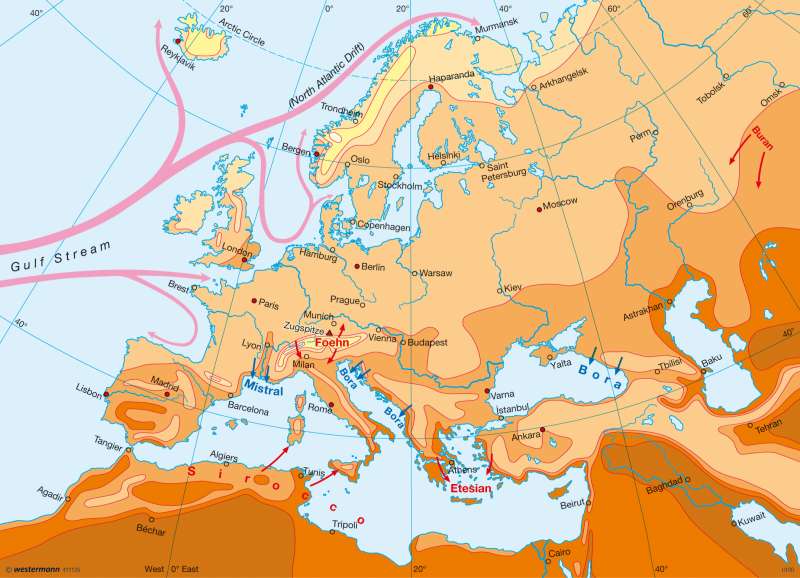July temperature
Europe - Climate
978-3-14-100790-9 | Page 44 | Ill. 2

Information
In addition to influence of maritime climate conditions in Europe, the progressive decline in radiation energy from north to south produces a characteristic pattern of temperature distribution into zones at different latitudes. This pattern is especially pronounced during the summer months (July). Europe encompasses parts of three climate zones: subtropical, temperate and polar.Thanks to a largely positive radiation balance, the map of temperatures in July (based on long-term averages computed for the standard period from 1961 to 1990) shows a north-south temperature gradient over much of the European continent. The comparatively cool masses of water in the Atlantic exert downward pressure on temperatures, causing the July isotherms over Western and North-western Europe to shift toward the South. While mean July temperatures reach 20 °C in Eastern Europe north of the 60th parallel, temperatures along the Atlantic coast are lower at the 50th parallel, due to the influence of relatively cool masses of air carried inland from the ocean by prevailing westerly winds.
As a result of stronger solar radiation and the scarcity of cloud cover, the highest temperatures are reached in the arid regions of the Subtropics. Mean temperatures in the interior areas of North Africa and Asia in July often exceed 30°C. The lowest July temperatures in Europe — 5 to 10 °C — are recorded in northern Scandinavia and Iceland. The higher elevations of mountainous regions also stand out islands of cooler air in both summer and winter.
P. Frankenberg, A. Siegmund, D. Volz; U: J. Southard




